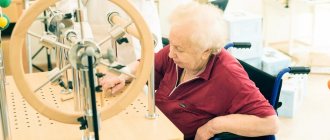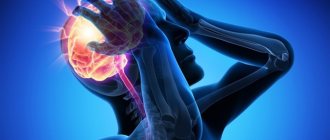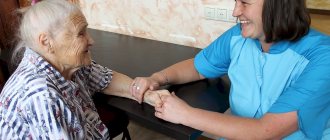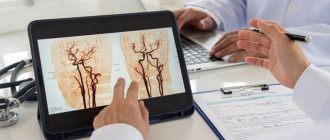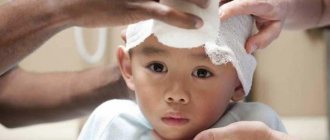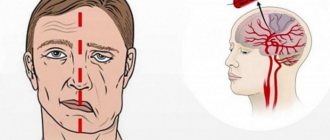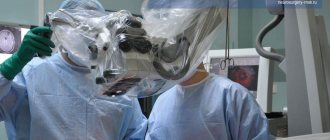Stroke (apoplexy, stroke) - a disorder of cerebral circulation - is considered a disease of old age, since the main risk factors are cardiovascular diseases, atherosclerosis, and hypertension. However, now more and more often able-bodied people become patients of neurologists.
Stroke in young people is not uncommon nowadays. This disease is rapidly getting younger. It is sad that emergency doctors often perceive the symptoms of a stroke as signs of other diseases, including psychogenic ones.
Causes of stroke at a young age
- increased levels of protein in the blood, diseases of the circulatory system;
- pathologies of the heart muscle and blood vessels;
- diabetes;
- various infectious diseases;
- benign and malignant tumors;
- side effects of drugs;
- bad habits.
An increased level of protein in the blood is an alarming symptom, which is an important indicator of protein metabolism. The higher the protein level, the more serious the disease. This may be an autoimmune process or a bacterial disease, as well as some chronic pathologies, such as polyarthritis. High levels of protein are the cause of arterial blockage and the formation of microthrombi.
Infectious diseases can also become a risk factor for an attack - they affect the biochemical composition of the blood. Examples of such infections are encephalitis, meningitis, and herpes.
Diabetes mellitus, both type 1 and type 2, affects blood vessels and the heart. Pathology in the system causes disturbances in cerebral blood flow.
Tumors (benign and malignant), as they increase in size, directly affect blood circulation and mechanically compress blood vessels.
Side effects of some medications may include conditions that can lead to stroke. Recently, with the development of social networks and the Internet, the problem has acquired frightening proportions. At a correspondence appointment, “specialists” prescribe medications without even looking at the patient’s tests. Patients themselves can, without the help of doctors, find a description of any drug, prescribe it for themselves (again, without tests or examinations) and buy it without a prescription (also via the Internet).
Of course, not all medications have such serious consequences. You need to be especially careful about hormones (or those substances that affect their levels), including birth control pills.
An unhealthy lifestyle is a topic that a specialist of any profile is ready to support. Drinking alcohol, smoking, and physical inactivity are the main risk factors. Add to this constant stress, nervous tension and lack of proper nutrition habits (in particular, a lack of protein in food and a large amount of processed foods and fast food) - and now we already have every chance of getting a stroke at a young age, the causes of which are so banal that many don't even believe it.
Expert opinion
Author: Polina Yuryevna Vakhromeeva
Neurologist
Stroke at a young age, according to WHO, is suffered by patients between 15 and 45 years of age. Young patients may rarely suspect acute cerebrovascular accidents, since stroke is traditionally considered a disease of older people. The incidence of ischemic stroke in young people is 5-14%, and women are more susceptible to the disease than men. Heart defects, surgeries on this organ, and hormonal imbalances significantly increase the risk of developing ischemic stroke among young people. The cause is most often dissection of intracranial and extracranial arteries. In second place is cardiogenic embolism.
In young patients, the mechanism of stroke is different than in older patients, so a different approach to diagnosis and therapy is required. At the Yusupov Hospital, according to the protocols for the examination and management of such patients, the specifics of stroke in young people are taken into account. Those studies are prescribed that are most appropriate if acute cerebrovascular accidents are suspected in young patients. During the rehabilitation period, exercise therapy instructors work with patients.
Prevention of stroke in patients with risk factors includes control of blood pressure, blood sugar levels, smoking cessation, adjustment of necessary drug therapy, adequate physical activity and diet.
Forecasts
Paradoxically, the reduction in mortality from stroke cannot serve as a basis for hopes for a quick solution to the problem of one of the most serious diseases. It is easy to assume that with an increase in population and life expectancy, the absolute number of people who die from stroke will increase, as will the incidence. The US Census Bureau (USA) forecast suggests that the number of patients who died from stroke in 2050 will be 3 times more than in 2000 (Fig. 3).
| Fig.3. Forecast of the number of deaths from stroke until 2050 (USA). |
With varying degrees of deviation, but this trend will be typical for other countries.
Today in China, the absolute number of strokes is comparable to the number of strokes in the rest of the world. It must be borne in mind that a decrease in mortality entails an increase in the likelihood of repeated cerebrovascular accidents and an increase in the number of patients with chronic forms of cerebral circulatory failure. There are many compelling explanations for the “stroke paradox.” The connection between stroke and life expectancy seems to be the most substantiated [12,17]. The annual risk of stroke in the age group 45-54 years is 0.1%, 65-74 -1%, over 80 years -5% [18]. Consequently, if in middle age only one in 1000 people suffers a stroke, then after 80 years, every fourth person becomes a victim of a brain stroke. According to the Framingham Study, the likelihood of having a stroke doubles every decade of life after age 55. According to other estimates, the probability of death from stroke increases by 11% per year starting at age 69, this risk doubles every 6.6 years [11]. It is quite obvious that with an increase in average life expectancy, the absolute number of patients with stroke also increases. The “gender” of stroke also changes - in older age groups, stroke is more common in women, which is associated with two circumstances: the longer life expectancy of women and the lack of the protective effect of female sex hormones in older age groups. Relatively rapid changes in the demographic situation (compared to the millennia of formation and development of civilization) turned out to be characteristic of the twentieth century. They consisted not only in rapid population growth, but also in changes in the ratios of different age groups. Over the past 40 years, the number of people on the planet has doubled and reached 6 billion people [12]. In countries with developed economies, the birth rate has decreased, but life expectancy has increased. In developing countries, at a slower rate, life expectancy also increased, and in addition, the birth rate remained high. The average life expectancy in a number of European countries has reached 78-84 years. In the mid-1950s, the average American could only expect to live 47 years. According to the US National Center for Health Statistics, in 2005, the average life expectancy of Americans reached 77.5 years. In 2000, there were 4.3 million people over 85 years of age in this country; it is expected that in 2050 there will be 19.4 million. In Russia, the main global demographic trend of recent decades is clearly visible - a rapid increase in the proportion of elderly people in the overall population structure . Already today, a fifth of the country’s population are people of retirement age, of which about 11% are over 80 years old. In large cities, about 20% of residents are elderly. Compared to 1979, the number of people over 85 has doubled. In 1939, there were 4.1% of elderly people in Russia, in 1999 – 12.2%. General global trends in the growth of older age groups in the population structure of some countries are presented in Table 1 [12]. It should be noted that even this picture is not entirely correct, since in the last century those representatives of the population who are currently classified as middle-aged were considered “elderly”. Revision of age criteria towards their increase (WHO Report “Aging and Human Health”, 2001), which categorizes older people over 65 years of age, does not change the essence of the matter, although the situation is not so alarming [12]. In the near term, the current demographic trend is likely to continue. On average, human life expectancy has increased by 0.5-1% per year in recent decades. At first glance, the demographic situation in recent years easily explains the worsening situation with cerebrovascular pathology. However, the modern picture of stroke contains many contradictions and difficult-to-explain facts that need to be understood in order to build an effective prevention system [17]. One of these contradictions is that not all of the increase in the incidence of I can be associated with an increase in the proportion of elderly people in the population structure. Stroke is getting younger—over the past five years, a third of the total number of patients with cerebrovascular accidents were people under the age of 50 [2,10]. In recent years, arterial hypertension in adolescents has become detected 3 times more often. During the period from 1990 to 2000 in Russia, the absolute number of people dying annually from diseases of the circulatory system increased by more than 307 thousand people, while there remains a steady trend towards a decrease in the age of those affected [2,7]. Over these years, mortality rates between the ages of 20 and 24 increased by 82%, between the ages of 25 and 29 – by 76%, and between the ages of 30 and 35 – by 63%. In 2003, 1 million 330 thousand people died in our country due to heart and vascular diseases (Chazov E.I., 2004). It is obvious that the incidence of stroke increases along with the increase in cardiovascular pathology in the overall morbidity structure. Consequently, the incidence of stroke depends not so much on age, but on the syndromes of cardiovascular pathology, characteristic of a certain age, but increasingly manifesting themselves in different age groups. And if these syndromes are detected at a young age, then the absolute number of strokes also increases. This preliminary conclusion is supported by the results of the Framingham study, which reveals a connection between stroke and arterial hypertension, cardiac arrhythmias, and left ventricular hypertrophy [15]. The dynamics of mortality from diseases of the cardiovascular system (Fig. 1) illustrates not only the fact of obvious achievements in the fight against cardiovascular pathology at the end of the last century, but also the inexplicable well-being at the beginning of the century. There is every reason to believe that there may be general causes of increased levels of cardiovascular pathology that are independent of the individual. It is known that morbidity (like many other biological processes on the planet) is subject to fluctuations. The periodicity and cyclicity of global processes associated with solar activity and geomagnetic changes have a certain impact on morbidity. It is interesting that periods of increased incidence generally coincide with periods of solar activity noted in the works of A.L. Chizhevsky [19]. If the author’s calculation tables ending in the early 30s are continued, preserving the identified patterns, then the peaks of solar activity fall in the early 50s and early 80s of the last century. The modern period is characterized by pronounced solar activity, which has persisted since the early 90s of the twentieth century. Of course, the influence of global space and geophysical processes on the incidence of stroke is associated with hemodynamic, biochemical, immune, hematological and other systemic changes. It is strange that existing prognostic concepts completely ignore external biophysical factors contributing to cerebral circulatory decompensation. Modern research fully confirms the observations of naturalists of the last century N.P. Kravkov, S. Nordmann and others, who discovered vasomotor reactions, changes in blood viscosity and microcirculation when exposed to electromagnetic fields. It has been established that fluctuations in the Earth’s electromagnetic field affect the production of melatonin, the secretion of which affects the release of nitric oxide and the state of erythrocyte aggregation [20]. The increase in morbidity rates, paradoxically, can be associated with the development of new medical technologies. The last decades of the last century were characterized by revolutionary changes in the diagnosis of diseases of the cardiovascular system. The widespread introduction of ultrasound research methods into medical practice has made multiple, safe examinations of the heart and blood vessels available. and MRI, angiography are just some of the most striking technological advances that have moved the diagnosis of vascular diseases of the heart and brain to a completely new qualitative level. It is believed that approximately 40% of strokes with focal brain damage could not be verified without CT and MRI [11]. Stress testing and various methods of monitoring the electrocardiogram and blood pressure have certainly improved the diagnosis of cardiovascular pathology and, to some extent... increased the statistical incidence rate. New functional and laboratory research methods have made early diagnosis an asset in clinical practice. The concept of preclinical diagnosis of diseases and syndromes has become full-fledged. Early diagnosis affected not only an increase in primary morbidity, but also a decrease in mortality, since timely treatment improves disease outcomes and prevents complications. Apparently, thanks to the development of early diagnostic methods in recent decades, the structure of stroke has also changed: the proportion of patients with cerebral hemorrhages has decreased, and the number of fatal strokes has decreased. Overall, the risk of death from stroke has decreased by 25% since 1971 [13,15,16]. In part, the increase in incidence rates can be explained by improved detection and recording of acute stroke cases. This was facilitated by the development of information technology and the general views of specialists, standards of diagnosis and treatment of the most common diseases and syndromes. Clinical trials of drugs and multi-center international studies conducted according to high diagnostic standards also played a certain role. Reasons associated with more effective prevention and treatment of stroke complications should be considered very significant in explaining the decrease in mortality and mortality in the hospital period. The emergence of new generations of antibiotics, anticoagulants and antiplatelet agents, along with improved care and nutrition, significantly influenced the dynamics of these indicators. Mortality decreased most significantly in the early 80s and reached a plateau in the early 90s. But, mortality from strokes reached its lowest point in 1992-1993, after which an increase was noted for the first time since 1915 [2,21]. Apparently, a decrease in mortality in the acute period of the disease below the threshold of 8-10% in the coming years is unlikely. There are currently no fundamentally new methods for treating stroke and its complications. The basic capabilities of existing methods (and medicines) have been exhausted. Developed by the American Heart Association's Stroke Council in 2003, the Update reviews stroke treatments and their effectiveness. In describing the effectiveness of the most common treatments for stroke, the Council recognizes that there are currently no medications that have been proven to influence disease outcomes. Surgical interventions on cerebral vessels in the acute period of stroke do not improve outcomes either [22]. Modern medical technologies used in intensive care units do little to change the overall picture. In most cases, severe outcomes of the disease occur outside the walls of a neurological hospital during the first year. But it is these losses that reduce the number of people surviving a stroke by up to 60%. Recent population-based studies have shown that new research methods, while significantly influencing diagnosis, have not led to a significant increase in survival after stroke [21,22]. Taking into account the increasing incidence of I, even the most obvious achievement in the fight against this disease (decrease in mortality) looks quite modest. Noteworthy is the obvious discrepancy between fundamental theoretical and technological advances in medicine and the final results (Table 2).
| Most significant achievements | New diagnostic methods | New treatment options | results |
| Angiography, Doppler ultrasound, CT, MRI, PET, qualitatively new laboratory research methods; | Surgery of coronary and cerebral vessels; New highly effective drugs for the correction of blood pressure, hemostasis, dyslipidemia and the treatment of circulatory failure; | Reduced mortality in the acute period of stroke |
The last decades of the twentieth century have significantly changed the views of scientists on the problem of stroke. Fundamental research in the field of atherogenesis, the pathogenesis of arterial hypertension, the concept of risk factors, the concept of stroke heterogeneity are only a small part of the fundamental theoretical research and generalizations in the field of cardiology and angioneurology. Fundamentally new diagnostic methods and the fantastic possibilities of vascular surgery would seem to lead to a natural victory over stroke, leaving this disease in history as malaria or the plague. But that did not happen. Advances in medical science not only have not significantly affected the effectiveness of stroke prevention, but have not brought reliable treatment methods into practice. The increase in incidence and stabilization of the mortality rate over the past decade inevitably raises the question of the burden of stroke, which depends on the absolute number of patients and survivors. In the most general terms, this concept can be defined as the sum of economic, medical and social costs associated with the diagnosis, treatment and rehabilitation of a patient with stroke. As the number of cases and survivors increases, so does the burden of stroke [23]. An increase in the burden of stroke inevitably leads to a decrease in the quality of medical care due to the growing economic component of the problem. An attempt to analyze the burden of stroke in more detail leads to a further deepening of the stroke paradox. Undoubtedly, the diagnosis of cerebrovascular pathology is becoming more reliable, however, the cost of diagnostic studies is increasing many times over. It is enough to compare the volume of diagnostic studies of a patient with a stroke in the middle and at the end of the twentieth century. In the first case, these are routine blood tests and, in some cases, chest radiography; in the second, extensive biochemical tests with the study of hemostasis indicators, X-ray computer and magnetic resonance imaging of the brain, and ultrasound examinations of blood vessels. In the treatment of patients with stroke, modern antibiotics, fractionated heparins, plasminogen activators, various means of hemodynamic correction and neurometabolic drugs are used. All these progressive changes affected the results of treatment, but not to the same extent as the costs of managing patients with stroke increased. The situation with the treatment of patients who have suffered a stroke is no less dramatic. In Russia, the main burden of economic costs and patient care falls on the relatives of the victims. Actual home care time is 10 – 15 hours per day for each day of the week. The indirect costs to a family associated with treating a stroke patient are difficult to account for. As such, they must consider loss of caregiver wages, consultation fees, and deterioration in caregiver health [24]. A further development of the stroke paradox is that patients who have had a stroke increase the burden of stroke. In other words, any advances in improving the effectiveness of stroke treatment with increasing incidence only increase the value of this indicator. Active treatment and rehabilitation during the first year of the disease accounts for approximately 22% of total costs [25]. Taking into account the current situation and current trends, we can draw a reasonable, although banal in its final formulation, conclusion: preventing stroke is the most reliable and least expensive way to solve a problem of national importance. Another thing is obvious: a simplified and primitive approach to organizing primary and secondary prevention of stroke, based on recommendations for a healthy lifestyle and the elimination of so-called risk factors, is not effective enough. Preventive programs work where the capabilities of preventive cardiology and angioneurology are fully used within the framework of newly organized stroke centers. Stroke centers that have already been organized and actively operating in recent years in different regions of Russia demonstrate new possibilities for preventing severe cerebrovascular pathology. Since 2002, the specialized interdisciplinary service “STOP-INSULT” has been operating at the Center for Endosurgery and Lithotripsy. Over the course of three years, more than 3,000 patients at high risk of stroke underwent a comprehensive examination at this center under a special program. Modern laboratory tests, ultrasound methods for studying the cardiovascular system, 24-hour blood pressure and ECG monitoring are included in screening studies for patients of certain age groups. Coronary and cerebral angiography and minimally invasive angioplasty form an integral part of the preventive treatment program for patients at high risk of stroke. As a result, the incidence of stroke among patients under observation does not exceed 1.7 per 1000. The results of the preventive program of the Krasnodar Stroke Center have been published [25]. The incidence of stroke in the region decreased by 54% - from 3.2 to 2.1 per 1000 population, and mortality from stroke - by 20%. Thus, the growing threat of stroke requires the development of an individual direction of prevention, based on modern methods of diagnosing preclinical manifestations of the most dangerous pathological processes and syndromes. Practice shows that therapeutic correction of identified disorders can be very effective and can significantly affect the incidence of stroke.
Risk factors for stroke in young people
Genetics
A meta-analysis of twelve studies involving almost 60 thousand people found that there are four genes that influence susceptibility to apoplexy. In simple terms, if your parents (or grandparents) suffered an attack, then you should monitor your health very carefully.
Pathologies, anomalies and diseases of the heart and blood vessels
People with heart problems (ischemia, atrial fibrillation, valve pathologies) and developmental anomalies of this organ must monitor their condition and undergo regular examinations.
Diseases of the veins and arteries are also risk factors, but if you or your loved ones have already been diagnosed with them, it is important to monitor the quality and quantity of food, include physical activity in your regimen and regularly visit specialists to prevent complications.
Gender is a risk factor
In old age, the risk factor is male gender, but at a young age women are at risk, especially those taking hormonal drugs and smoking. The fact is that these two factors affect blood clotting - they increase it and, accordingly, can cause an ischemic stroke.
Women who have recently given birth are also at risk. Pregnancy and childbirth are very difficult processes, and often the body increases blood clotting (especially after childbirth) to avoid large blood loss. This causes thrombosis.
Metabolic disorders
A wide range of metabolic problems lead to the development of strokes at any age. Sad statistics show that currently a very large number of elderly people suffer from metabolic syndrome and type 2 diabetes. These conditions negatively affect the condition of blood vessels.
A problem with metabolism is a problem of reducing the overall quality of life: physical inactivity, imbalance of dietary fat, polyhypovitaminosis. And this is a factor that we can influence, for example, giving up bad habits, improving nutrition, moving more. We hear all this advice regularly, but few people fully understand their importance.
Emotional factor
Many diseases are attributed to stress. And for good reason. The first danger of chronic nervous tension (and lack of sleep) is a change in the level of cortisol, which “pulls” other hormones with it. Constantly being “on your nerves” is a direct route to a neurologist. High blood pressure, headaches, chronic fatigue syndrome, constant overload - these are the terrible realities of the modern world.
Controlling emotions and lifestyle are factors that we can also influence. But, unfortunately, they are rarely paid attention to in the pursuit of success and career growth. It’s even sadder that even after the attack has already happened, young people continue to live the same way, which should not be allowed at all.
What types of stroke do young people suffer from?
Ischemic stroke
This is a violation of blood supply with damage to brain tissue and changes in its functions. Ischemic stroke at a young age is accompanied by softening of areas of brain tissue. The cause of ischemic stroke is insufficient blood supply due to the development of thrombosis or embolism. By the way, among young people, the ischemic type is more common in women.
In simple terms, blood clots (blood clots) or foreign objects (emboli) that normally should not be present in the bloodstream (or lymph flow) enter the vessels of the cerebral circulation and block it. This leads to a lack of brain nutrition, oxygen starvation and tissue death.
Ischemic strokes account for up to 85% of all strokes and are in second place among the causes of death. This type of attack is more common in patients over 60 years of age, but younger patients can also become victims.
Hemorrhagic stroke
Previously, this stroke was called a hemorrhage. Actually, this is a hemorrhagic type of stroke, when, due to increased permeability of the walls of blood vessels or their rupture, blood spills onto the brain.
Most often, hemorrhage develops during the day against the background of severe stress (what is called “getting nervous” or “freaking out”).
Why does a stroke occur?
Ischemic stroke (ischemia is a decrease in blood flow) develops due to blockage of a vessel that supplies blood to an area of the brain. Most often, the vessel is blocked by a blood clot that formed locally or was brought by the blood flow from another organ. A thrombus is a blood clot, the formation of which the coagulation system responds to damage to the vascular wall. In order for a blood clot to occur, there must be prerequisites - atherosclerosis, diabetes mellitus, varicose veins, hypertension or other conditions in which the inner wall of the vessel is damaged. Massive thrombus formation begins only on the vessel wall, which has lost its smoothness, is pitted and ulcerated. Most often, blood clots form in the cerebral arteries, namely the middle cerebral artery, and in the vessels and cavities of the heart. Not only a blood clot can come off, but also a piece of atherosclerotic plaque (microembolism). A blood clot never forms in a healthy vessel.
At CELT you can get advice from a neurologist.
- Initial consultation – 4,000
- Repeated consultation – 2,500
Make an appointment
Signs of stroke in young people
A sharp circulatory disorder has its own signs associated with changes in brain function:
- the right or left side of the body goes numb;
- sharp deterioration of vision (in one or both eyes) and hearing;
- dizziness, severe headache, loss of consciousness;
- cold sweat, tachycardia, dry mouth;
- memory losses;
- speech disorders.
Even one of these symptoms should cause at least concern, and a person should definitely visit a specialist and undergo an examination.
How to determine if a person has a stroke. Ask him to smile - if blood circulation is poor, one side of the face “does not work” and the smile will turn out crooked. You can also ask for a show of hands. Ask the person their name and what day it is - confusion and memory loss are very common after a stroke.
If, despite the presence of all symptoms, a person claims that everything is fine with him, shine a flashlight in his eyes. If the blood supply is disrupted, the pupils will react differently. But in any case, remember, it’s better to be safe and call an ambulance, naming all the symptoms and the time when they were discovered.
It’s worth talking separately about how carelessly we sometimes treat headaches. “It’ll pass now,” “give me something for the headache/pressure,” “dizzy,” “I’m tired,” and many more phrases that we hear or say ourselves. If you begin to notice regular headaches, lethargy, and fatigue, then you should not go to the pharmacy for another painkiller or blame it all on hard work, but consult a doctor.
Often we overestimate our strength and really get tired, but, as doctors say, it’s better to be safe, because it will be much more difficult to deal with the consequences.
Treatment of ischemic stroke
Treatment of any stroke is a complex matter, which does not always end successfully. Doctors try to reduce the softening zone with the help of medications. At the time of a vascular accident, it is necessary to maintain vital functions - heart function, breathing, metabolic processes. Massive infusion therapy and the use of an artificial respiration apparatus are required. All this is done in a hospital, sometimes in the intensive care unit. It is often possible to dissolve a blood clot with medications. However, the event has already happened, and not everything can be returned to its previous level.
From the moment the condition stabilizes, restorative treatment is required, aimed at restoring lost functions. In recent years, it has been proven that the brain has neuroplasticity - nerve cells are able to “retrain” and change specialization. When the cells that controlled movements die, their function is taken over by “neighbors” who were previously doing something else or were inactive. For this purpose, physical therapy techniques are used.
To prevent a stroke, you need to consult a neurologist if unknown disorders appear - persistent headache, clumsiness in the hand, speech impairment, forgetfulness, blurred vision, high blood pressure. It is possible to prevent ischemia, but this requires timely consultation. Life without restrictions is possible if you take care of it.
Make an appointment through the application or by calling +7 +7 We work every day:
- Monday—Friday: 8.00—20.00
- Saturday: 8.00–18.00
- Sunday is a day off
The nearest metro and MCC stations to the clinic:
- Highway of Enthusiasts or Perovo
- Partisan
- Enthusiast Highway
Driving directions
Treatment of stroke in young people
If an attack is quickly identified and the patient is hospitalized, the treatment prognosis is favorable. And all measures are aimed at eliminating the consequences and preventing a second strike.
In some cases, surgical intervention is necessary (for hemorrhages), then therapy begins. Drug treatment with several groups of drugs at once is of great importance:
- angioprotectors (to protect blood vessels and prevent a recurrent attack);
- anticoagulants (to reduce blood clotting and prevent blood clots);
- immunomodulators (since at a young age, stroke is often a consequence of problems with the immune system, especially in women);
- medications that prevent tissue death;
- vitamins.
The full range of medications is prescribed only by a neurologist and always after an examination, because depending on the type of disease, treatment may differ.
Lifestyle after an attack is important (if not decisive). Maintaining a balance of macronutrients and monitoring the intake of microelements are key factors that are needed for prevention and improving the quality of life. Be sure to review the list of medications you take regularly and, if necessary, eliminate or replace them.
For patients of any age during the rehabilitation period, there are three key tips - watch your diet, add physical activity and avoid overexertion.
